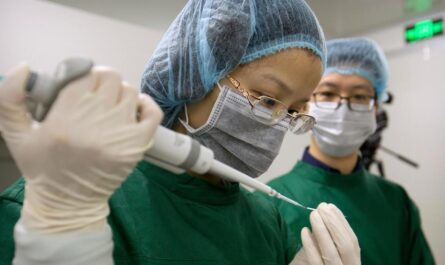A recent study has discovered that while connected vehicles can significantly improve travel time at intersections by sharing data wirelessly, automated vehicles without connectivity may actually slow down traffic. The main reason for this discrepancy is safety concerns.
According to Ali Hajbabaie, the first author of the study and an associate professor of civil, construction, and environmental engineering at North Carolina State University, there are two main drivers behind the interest in automated vehicles: enhancing passenger safety and reducing travel time.
While plenty of research supports the notion that automated vehicles can enhance safety, Hajbabaie argues that this study, which relies on computational modeling, suggests that if travel time is to be improved too, simply increasing the number of automated vehicles on the road is insufficient. Instead, vehicles need to be able to communicate with each other and with traffic-control systems that manage traffic flow at intersections.
To conduct the study, researchers employed a computational model to simulate traffic conditions. The model took into account four types of vehicles: human-driven vehicles (HVs), connected vehicles (CVs) driven by humans but capable of exchanging information with other connected vehicles and traffic control systems, automated vehicles (AVs), and connected automated vehicles (CAVs).
Hajbabaie notes that AVs tend to operate more cautiously due to their programming, which prioritizes safety by encouraging conservative driving. CVs and CAVs, however, have the ability to receive information about the future status of traffic lights and adjust their speeds accordingly, thereby minimizing stopping at intersections. Consequently, CVs and CAVs are expected to experience smoother movements with fewer stops compared to HVs and AVs.
In total, the researchers conducted 57 traffic simulations to assess the impact of various factors on travel time at intersections. For example, the simulations explored the effects of different combinations of HVs, AVs, CVs, and CAVs on traffic flow.
One key finding was that as the percentage of CVs and CAVs increased, intersection capacity also increased. In other words, when more vehicles with connectivity were present, traffic at intersections flowed more smoothly and quickly. A higher capacity also meant fewer vehicles were waiting at red lights on average.
However, the study also revealed that higher percentages of AVs, which lack connectivity, actually hindered travel times at intersections. These AVs, programmed to drive cautiously and minimize collision risks, inadvertently contributed to traffic congestion. The findings emphasize the importance of incorporating connectivity into both vehicles and traffic-control systems to optimize travel efficiency.
Though the study relied on a computational model, which has its limitations, Hajbabaie explains that assembling a mixed fleet of HVs, AVs, CVs, and CAVs in a connected traffic-control system is both difficult and costly. Field tests involving human drivers can also pose safety concerns. Therefore, modeling studies like this provide crucial insights into potential issues before real lives are put at risk.
*Note:
1. Source: Coherent Market Insights, Public sources, Desk research
2. We have leveraged AI tools to mine information and compile it




